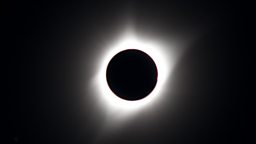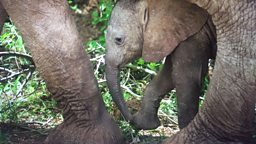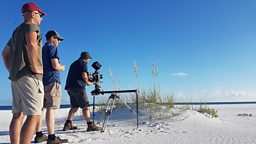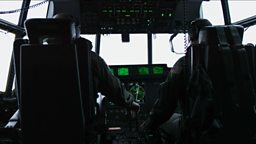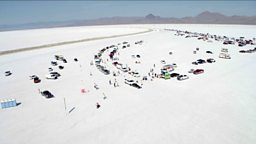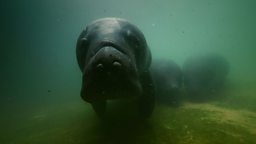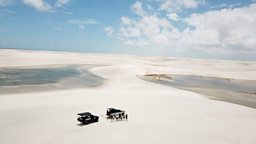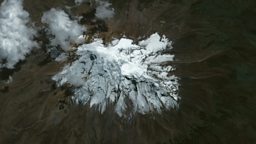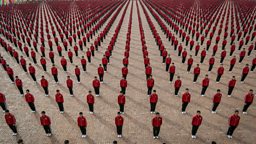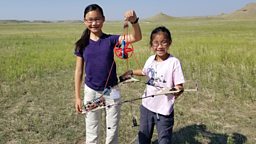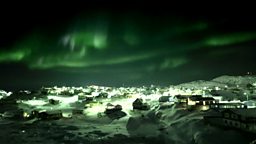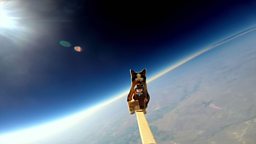As an eclipse unfolds
Aug 17th, 2017, Missoula, Montana.
by the Montana Space Grant Consortium(the MSGC)
The sign is on the door and we are headed to Wyoming!! Three years of planning, practising, and fundraising and now it is actually happening.
We will break up the 10.5-hour drive into two days due to our scheduled 20-tank helium pickup in Douglas, Wyoming to lift the planned 24 balloons to be launched starting Aug. 20th.
We have five mini-vans and five additional vehicles, with thirty people on the team, to carry us and all our supplies from Missoula; camping equipment, scientific sensors, food, water, balloons, etc.
We meet up with the rest of our team in Wyoming. We have team members from 8 different educational institutions in Montana plus two from SUNY Albany.
The farthest distance between collaborating teams in Montana is the University of Montana and Miles Community College at 488 miles but we still were able to coordinate practice launches.
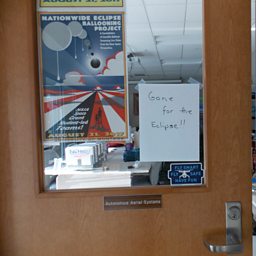
We are all in good spirits and looking forward to this adventure...
Aug 18th, 2017, Fort Laramie, Wyoming.
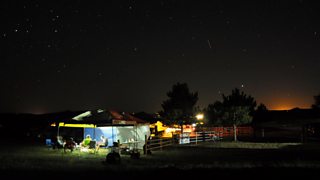
We are tired but excited from the drive. Tents are setup and gear is stored in the barns.
A few of the students are ending the day with card games.
Off to get a good night’s sleep.
Aug 19th, 2017, Fort Laramie, Wyoming.
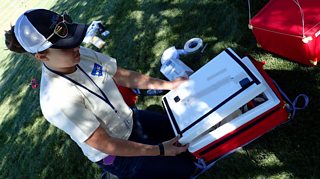
Doubts are creeping in, are we prepared?
Well, we have time, so we continue to practise. I have always been involved in sports but never have I prepared for so long to only have one shot, one day. Our team has covered the entire emotional spectrum from elation that funding was secured to disappointment weekly that we still had not perfected gathering the data.
Are we ready?
I’ve asked team leadership over and over to consider any additional risks for failure and no one can come up with any more contingency plans.
We are checking all the systems to make sure nothing was damaged during the drive. One iridium modem for tracking one of the large balloon payloads is not working, but we have a backup.
We are fortunate enough to have volunteers simulating our flights as they walk around with our payloads and we confirm we have tracking and our sensor data is recording as expected.
I get to meet Kimberly and Rebecca Yeung for the first time today, two sisters from Seattle, who are our new, young weather balloon engineers! I have been emailing in preparation for their balloon flight with us. Our team is aware they are a part of our group and we are all excited to work with them.
There has been a request to give a presentation to folks staying here and we are happy to oblige. We also have a separate team in Glendo, WY doing outreach as well with solar filters on telescopes.
The experience for the students to talk about their projects is invaluable.
Aug 20th, 2017, Fort Laramie, Wyoming.

Radiosonde - a battery-powered data collection instrument attached to a weather balloon, which transmits data back to a ground receiver.A definition
We officially start data collection today.
Our North and South radiosonde site teams left our central site by 9am this morning to make sure they have time to setup equipment and are ready for the 11:46am simultaneous launches to get a baseline dataset 24 hours before the eclipse.
The data from radiosondes includes atmospheric temperature, pressure, relative humidity, wind speed, and wind direction at high vertical resolution (every 1-2 seconds).
We have detailed schedules of launch frequencies and timing, plus checklists for data collection and data storage procedures. We can no longer communicate directly with each other as cell phone service is sparse but I have confidence in our team to pull this off and am proud of their commitment to excellence.
After the first launch all teams return back to the center site where launches will continue every six hours through the night. Coffee and adrenaline will eventually be fueling most of us as we will get little sleep in the next 24 hours.
The large balloon team is double-checking their equipment one last time while assisting the radiosonde teams. The whole team is remarkable in their support of one another as they clearly understand we are successful as long as the whole team is engaged regardless of each individual’s focus.
The summer has had its ups and downs and individual struggles with projects, but I cannot ask for a better group to work together now as they are each working seamlessly with one another.
Aug 21st, 2017, Fort Laramie, Wyoming.
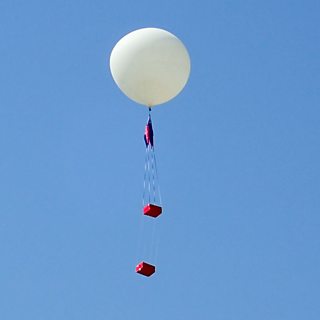
I have attended each radiosonde flight during the night and just finished with the 5:46am launch. Each launch can last between 2-2.5 hours until the balloon bursts. Off to get some sleep before the first large balloon launches. I can’t believe it is finally August 21st, 2017.
It is going to be a beautiful day.
9:30am
I just got some breakfast and am heading into one of the barns that has been cleared out for prepping our large balloons. The North and South site radiosonde teams left at 7am to begin launches at 10:19am.
The wind is quite strong today and with five consecutive large balloon launches taking place we need to have the full team wrangle the balloons for launch then hustle back for the next launch.
Two of the large balloons are carrying a NASA microbial experiment, one has the Chief Dull Knife College payload, one has the University of Montana streaming video system along with ultraviolet and temperature sensors, and one more is Yeungs' Loki Lego Launcher balloon.
Payloads are getting prepped simultaneously as the balloons are filling. Everyone is working in a coordinated fashion and knows exactly what to do.
Kimberly and Rebecca fit in like they have been practicing with us all summer. Alex and Chris from Sent Into Space have proved to be excellent mentors and role models for our team.
It is a marvel to see all this buzz of activity as the radiosonde launches continue at all three sites as well.
Launches are complete!
We all got to watch the eclipse between duties and are emotional from the experience.
The birds were returning to the trees during totality then returned to feeding after. Cheering from all of the human participants at the start of totality turned into profound silence as we witnessed such a breathtaking event.
It is now time to head out and recover our large balloon payloads. We have final coordinates for all five balloons and all systems appear to have landed intact.
22:00pm
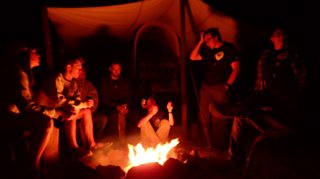
The last mini-van has returned with payloads.
The recoveries were fairly easy with the help of landowners. It is 10pm and we are just getting dinner.
The celebration with the team by the fire is well deserved.
Aug 22nd, 2017, Fort Laramie, Wyoming.
I am bursting with pride and know I am fortunate to have been a part of such a special group.
One last radiosonde launch to compare data 24 hours after the eclipse then we head home, lucky to have missed the traffic yesterday.
We have decided to make the drive in one day, it has been years since I have felt so exhausted!
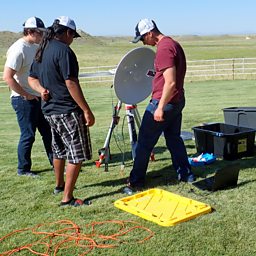
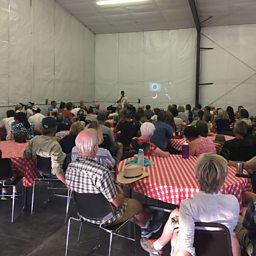
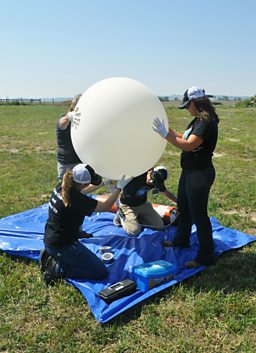
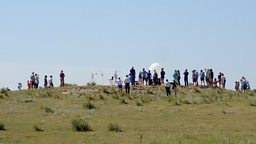
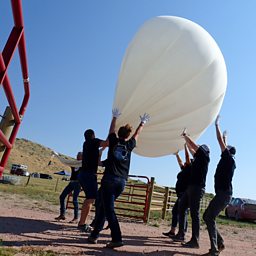


Our results and findings.
After analyzing, reanalyzing and writing results we had a paper published in February of this year. As with many projects our search for answers lead to many more questions. We found three areas to highlight;
- Our surface measurements showed a total temperature drop of 3.5C, within the range of previous studies, although the time lag after totality for this measurement was approximately five minutes faster than the normal range of 15 - 30 minutes after totality. Is this due to land surface cover?
- Comparing lapse rates during the eclipse within the boundary layer (BL), we saw gradual cooling before the first contact with the coldest profile occurring about 15 minutes after totality. All our measurement sites in Wyoming showed a more significant change in the boundary layer height during the eclipse than radiosonde data from the 2006 eclipse while the values for 2017 are equivalent to measurements made during the 2015 eclipse. With limited previous studies involving radiosonde profiles in the boundary layer available for comparison it is difficult to draw reasonable conclusions about whether our 2017 measurements fell within some normal range. Can we continue to commit to radiosonde profiles during total solar eclipses to build a body of knowledge for comparison?
- A secondary measurement focus on stratospheric gravity waves identified wave signals that were not present before the 2017 eclipse and appeared in the data after the eclipse, but the distribution of these wave parameters before and after the eclipse were not distinct enough to conclusively identify the eclipse as the source of these waves. Detecting eclipse driven gravity waves in 2017 was difficult due to the termination of radiosonde profiles prior to the stratosphere. How can we improve our measurement techniques to definitely produce evidence of eclipse driven gravity waves?
What's the next step in our research?
With curiosity driving our team forward we noticed the next total solar eclipse is in South America on July 2, 2019. Thus building on the infrastructure and training from the 2017 North American Total Solar Eclipse ballooning field campaign.
We are heading to Chile to combine lower and upper atmospheric measurements to investigate boundary layer height and propagation of gravity waves through the entire atmosphere during the 2019 total solar eclipse.
We are collaborating with the Andes LiDAR Observatory to collocate data in the mesosphere with both higher temporal resolution and higher altitude data into the stratosphere from our balloons. The team is excited and working hard to answer those next set of questions.
What an opportunity to cross boundaries and cultures to share in this unifying worldwide phenomenon!!!
Read the to read more about their results and findings from the 2017 Total Solar Eclipse.
